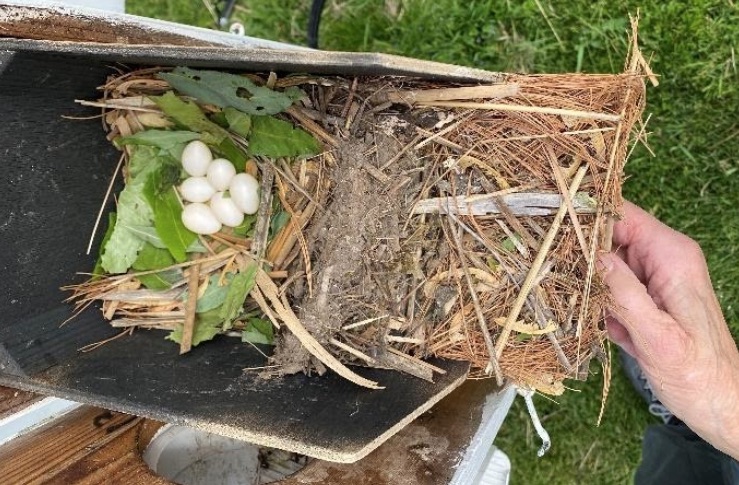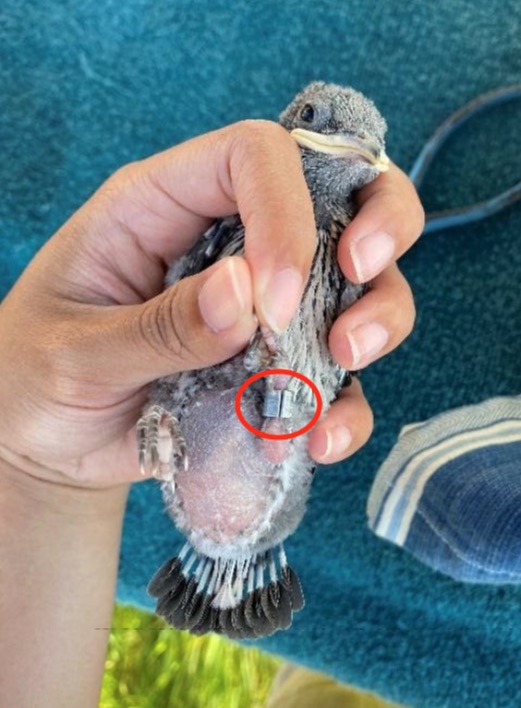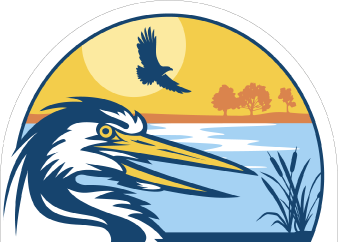It’s already summer and purple martin chicks are getting older!
Purple martins are a large species of swallow that almost exclusively nest in manmade cavities such as nest houses. They are colonial birds and live in groups of varying sizes. They begin building nests about a month after migrating to their final nesting site in the spring. The nests are usually made out of twigs and pine needles, and may have a mud dam in the front. When the female is almost ready to start laying eggs, the male will line the nest with fresh green leaves, which are a good indicator of a viable nest. Clutches range between 2-8 eggs, though an unusually large number of eggs could mean that two females are competing over the same nest. The female starts incubating when the penultimate, or the second to last, egg is laid, and the chicks should hatch in a little over two weeks.
Click here to become a member!
Click here to donate!

The nestlings will fledge in a month, during which time they are fed nutritious meals of dragonfly and other bugs. Before they fledge, employees and volunteers at Iroquois National Wildlife Refuge band the nestlings with bands. The bands identify individual birds to help track migration, range, longevity, and even behavioral information. The banding process occurs continuously over the summer because of the varying times of laying and maturing among different nests. Bands are vital for gathering data on birds so that people know what resources and habitats need to be protected or enhanced for continuing bird populations. Bands reported by the public are a helpful way for the Fish and Wildlife Service or other researchers to keep track of where birds go. If you find a tag or can read it, you can go online here to report it! Some birds you see may have multiple bands that are color coded, or other types of distinguishing markers on them to help researchers identify the bird without capturing it again. Though you may be curious about what a marking or band means, never try to catch or hurt a bird just to see its band.

This year’s public purple martin banding day at the wildlife refuge was a fun and educational experience for the folks who joined it. No birds were actually banded during this program. However, one of the wonderful volunteers at the refuge, Celeste Morien, gave a tour of the nestlings in the HQ Pond gourd rack. Celeste shared about the migration pattern of purple martins, their nesting behavior, as well as the differences between male and female plumage. Then the participants got the opportunity to hold some of the older chicks and see eggs and young babies inside of the gourds!


There is plenty of work for the refuge volunteers with over 1000 martin eggs in all of the gourds and nest cavities managed by the refuge. Besides leg bands, a number of the martins will also be outfitted with radio tags that will help researcher Dr. Heather Williams from SUNY Buffalo study the local populations of purple martins’ feeding range, their migration pattern, and possibly the survival rates of first year martins. Joe Siegrist from the Purple Martin Conservation Association came to help guide the research group through the tag fitting process. Though the radio tags are designed to be as small and unrestrictive as possible, they need to be put on properly to ensure that they do not slip off and entangle the birds.


The benefit of radio tracking is that it is much more efficient for collecting data than using conventional leg bands that need to be sighted and recorded. Through the Motus Wildlife Tracking System, anytime one of the radio tagged birds flies by a Motus tower anywhere in the world, its tag will be recorded along with location and time. This makes the tags a very powerful data collection tool that will hopefully allow us to learn more about purple martins’ and other birds’ behaviors in the future.

